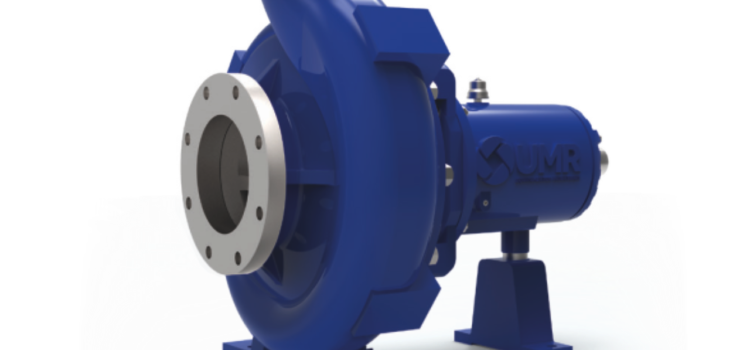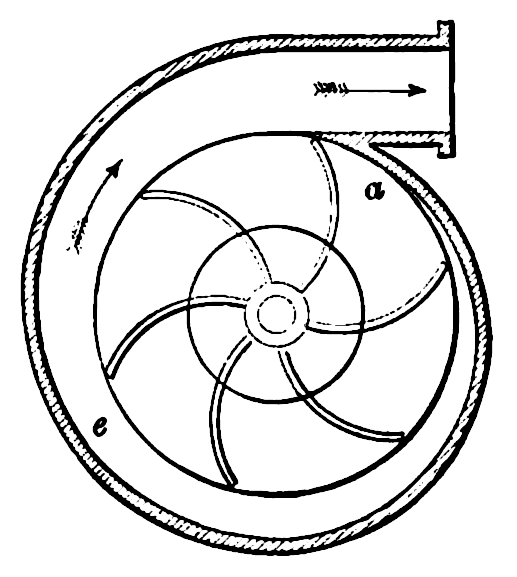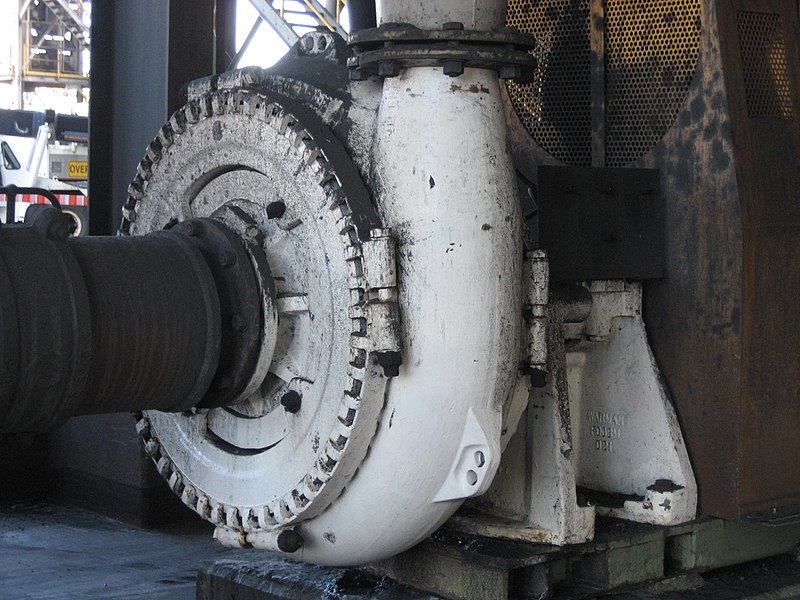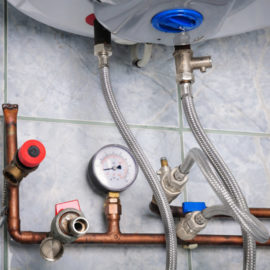
A centrifugal pump is one of the most common machines present in the industrial landscapes. In fact, they are second in number only to electric motors. When you consider that electric motors are used to drive centrifugal pumps, it is safe to say that the lion’s share of energy usage goes towards pumping with centrifugal pumps. If you are an industrial maintenance technician, mechanic or machinist, you’ll come across these machines at some point in your career. It would do some good to know how they work in the first place.
In general, a pump is a machine which converts mechanical energy into kinetic energy of a fluid being pumped, for the purpose of transporting that fluid from one point to another. However, in order to be classified as a centrifugal pump, it needs to have two unique components, namely the impeller and the volute casing. The impeller is a rotating disc with curved blades like a vane. The volute casing is a specially shaped pipe that contains the impeller and the pumped fluid.
In the basic sense, here is how the centrifugal pump functions.
Fluid gets to the pump at the center of the impeller called the suction eye. Friction between the surface of the rotating impeller and fluid causes the fluid to move by rotating.
If you think about it like this; it is like the friction between the rubber in your tires and the road, propelling your car forward, the impeller gains traction on the fluid as it spins in contact with it.
The rotating fluid is thrown to the outside of the impeller by centrifugal force, a phenomenon that causes objects revolving around a center point to move away from the center. This is how the fluid gathers kinetic energy from the impeller and this method of energy transfer by centrifugal force is the reason why these pumps are named centrifugal pumps.
The amount of energy imparted to the fluid is dependent on three factors.
1. The density of the fluid itself
2. The impeller’s speed of rotation
3. And the impeller’s diameter.
From the impeller, the fluid is released into the chamber of the volute casing, directed around to the discharge outlet and ultimately into the system.

The impeller
A very common misconception is that the curved vanes of the impeller help to move fluid by cupping it and consequently pushing it through the pump. So the correct direction of rotation for an impeller would be clockwise. That is not really what the vanes are there for. The vanes’ purpose is to conduct the fluid along the smoothest possible paths as it travels throughout the pump. Backward curved vanes help to stabilize the fluid’s flow conditions at high speeds and reduce demands on the motor. The correct direction of rotation for a typical impeller is actually counter-clockwise, as such you can always notice the correct direction of rotation of an impeller just by looking at the way the vanes are curved.
It is important to add that because of the way that centrifugal pumps impart energy to fluids, the impeller must always be fully submerged and in direct contact with the pump fluid. A centrifugal pump will not pump air and will not suck fluid through piping a straw. So before the pump is turned on, the casing must be flooded with fluid, a process known as priming. As the machine operates, there must be a sufficient amount of fluid under positive pressure at the suction inlet of the pump to replace the fluid which is being discharged. As such, the pump is placed below the fluid level of the source tank.
If the pump is ever starved of fluid, certainly the pump’s performance will be affected but it’s actually more serious than that. It is possible that the pressure at the suction eye of the impeller would drop below the vapor pressure of the pumped fluid. If that happens, then the fluid will effectively boil, little bubbles will form, travel partway through the impeller and collapse at supersonic speeds like little bullets taking bits of the impeller along with it—this a condition known as cavitation. A pump experiencing cavitation will not last long.
The volute casing
Volute is the shape of the casing. A volute represents a geometric shape defined as a spiral with an ever-increasing radius (like a snail shell). The volute chamber doesn’t stay the same size all the way around. It actually increases in area closer to the discharge outlet. At the point where the volute chamber starts over and the discharge outlet begins , there is a wedge-like protrusion called the cutwater.
The cutwater physically separates the discharge outlet and the volute chamber. It ensures fluid leaves the pump instead of just re-circulating over and over again inside of the volute chamber. The increase in the area of the volute chamber is essential to the function of the pump because that’s how the pump develops pressure.

There are various types of centrifugal pumps. In case you’re looking for one or want to know more about them, you can contact companies providing professional pump services in your area. The experience of their professionals will be the wealth of knowledge you need about centrifugal pumps.



